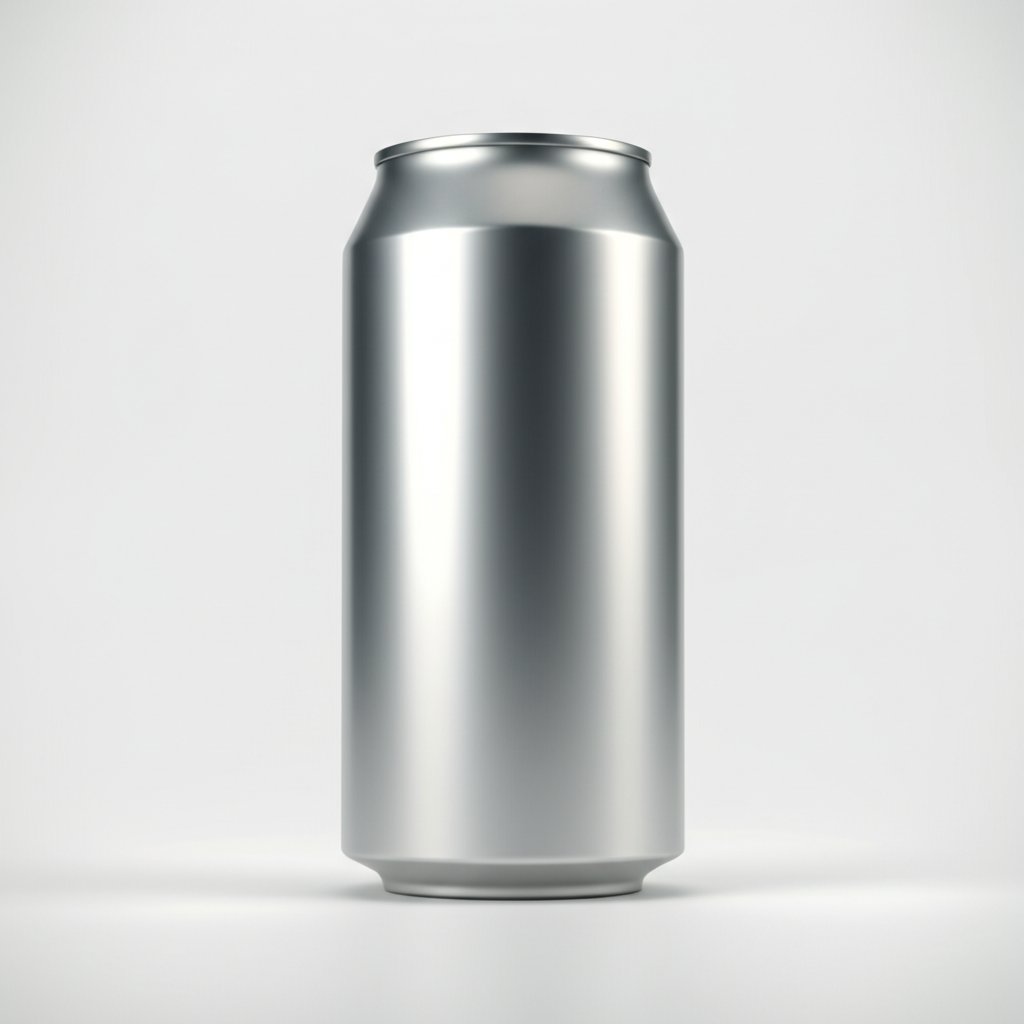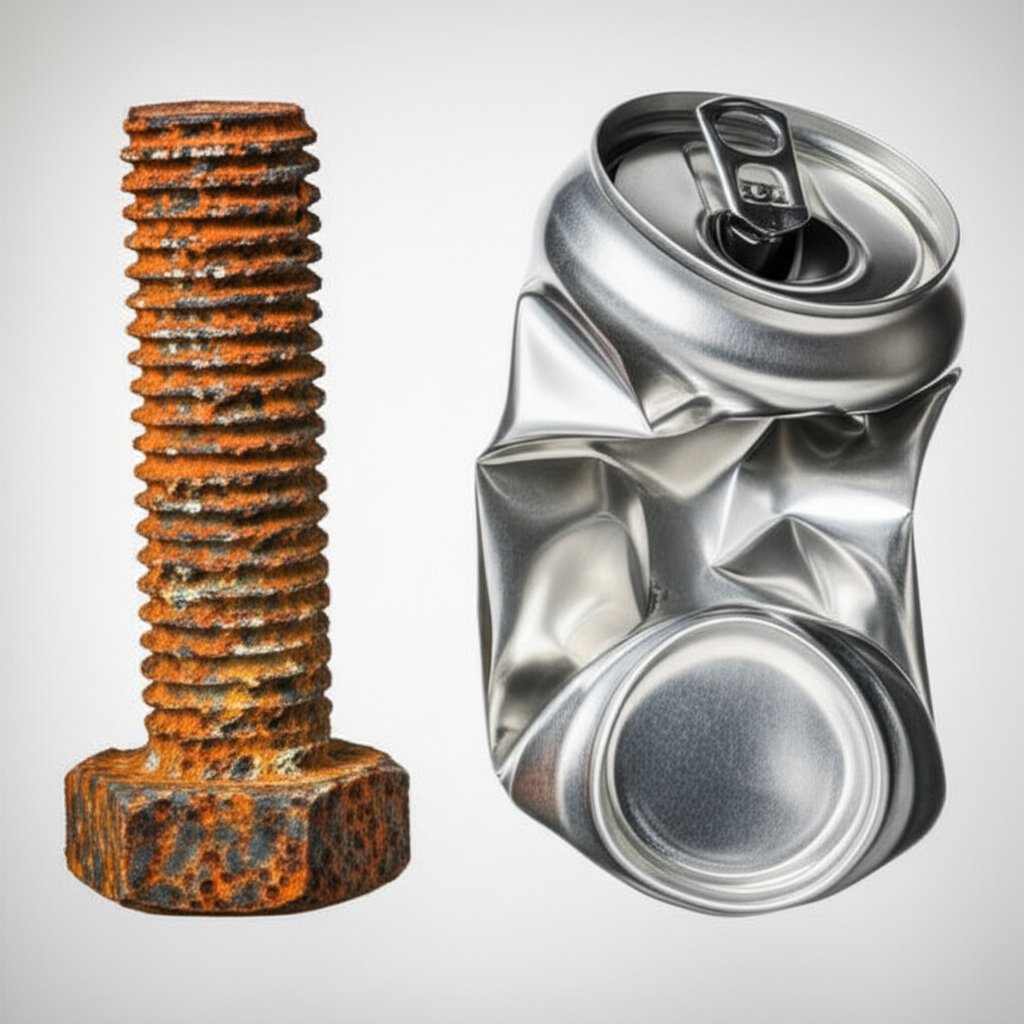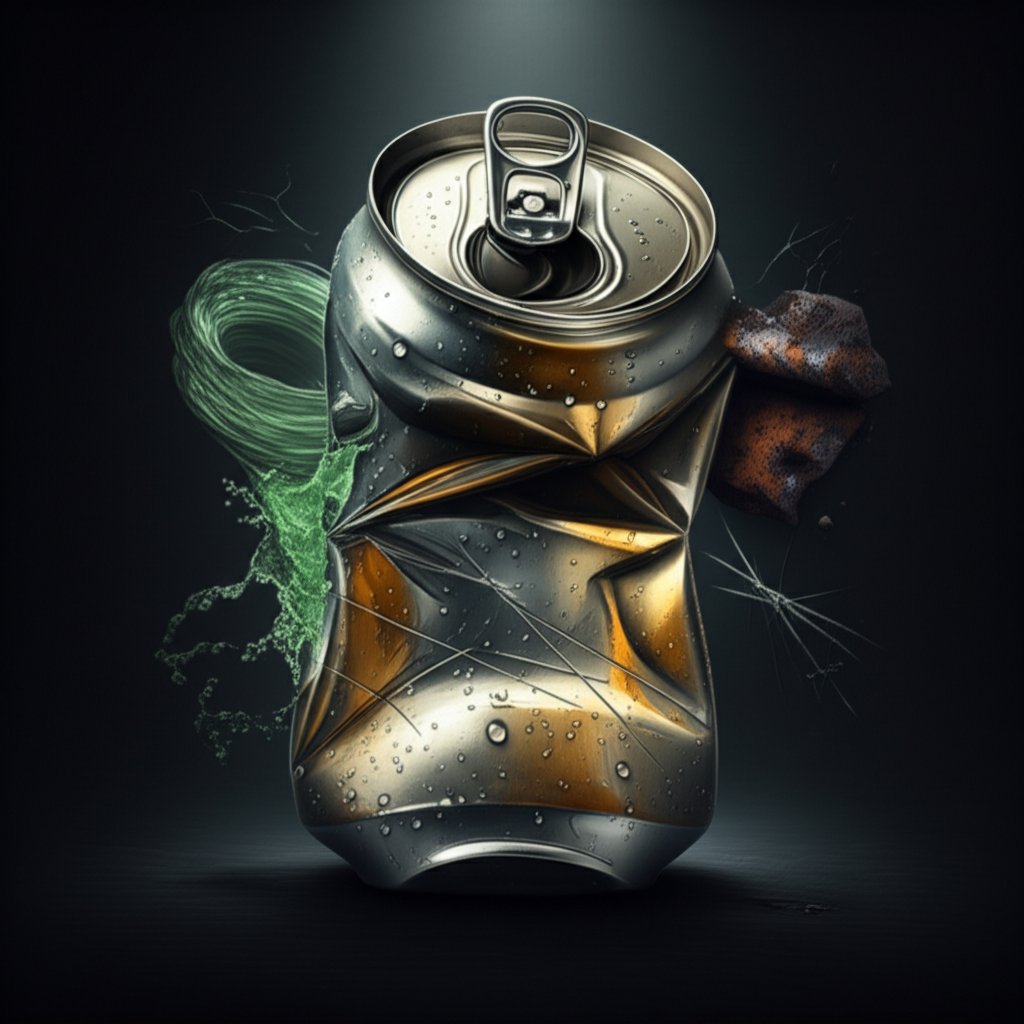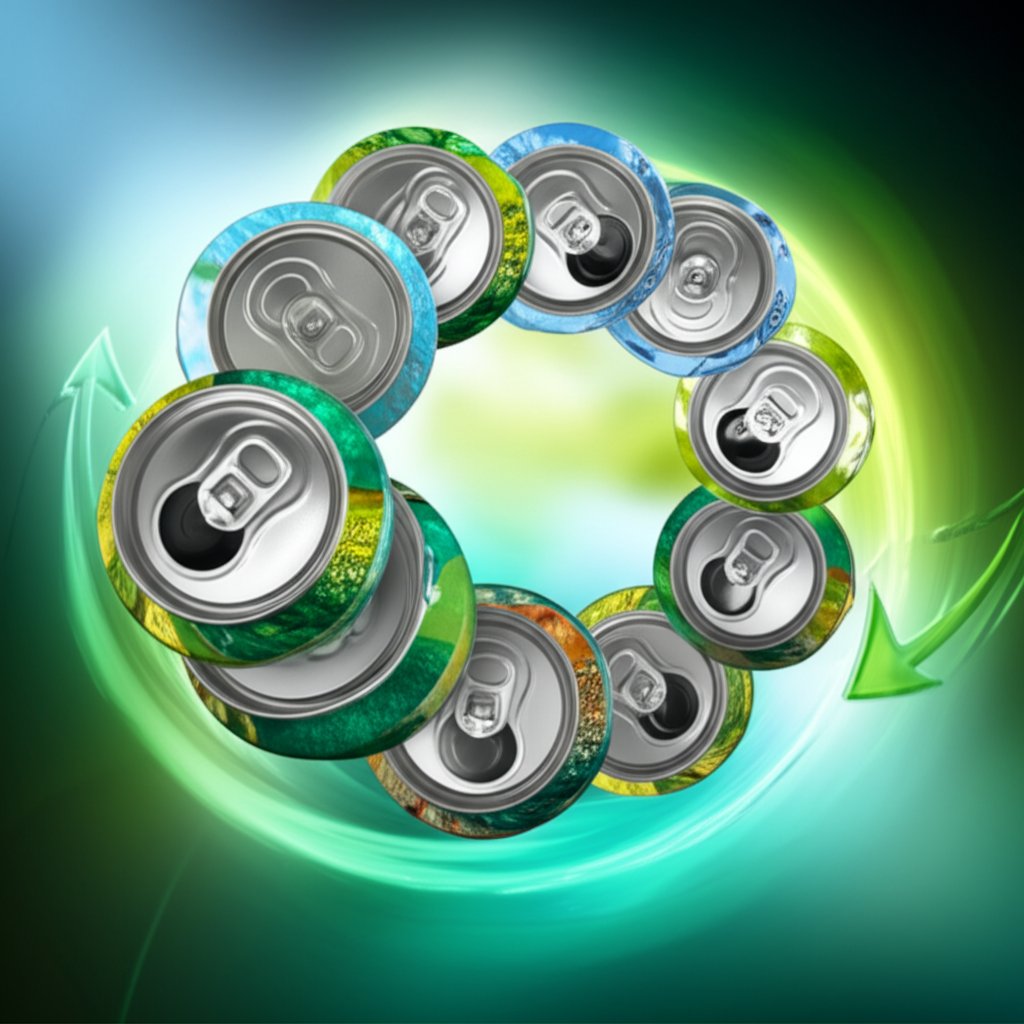
When you grab a cold beverage from the fridge, you might wonder: do aluminum cans rust? It’s a common question, especially since we’re all familiar with the flaky, reddish-brown rust that forms on old iron or steel objects left out in the rain. But when it comes to aluminum cans, the answer is a bit more nuanced. While aluminum cans do not rust like iron or steel, they are still susceptible to a different process known as corrosion.
Sounds complex? Let’s break it down. Rust is a specific type of corrosion that only happens to metals containing iron, such as steel. Aluminum, on the other hand, doesn’t contain iron, so it can’t rust in the traditional sense. Instead, when aluminum is exposed to air and moisture, it undergoes a process called oxidation, which leads to the formation of a thin, protective layer of aluminum oxide on the surface. This layer usually appears white or dull gray, rather than the familiar orange of rusted steel.
So, why does this matter? Understanding the difference between rust and aluminum can corrosion is key for both consumers and manufacturers. It affects how long your canned drinks stay fresh, how cans are stored, and even the environmental impact of packaging choices. Throughout this blog post, we’ll explore the science behind these processes, how aluminum cans resist corrosion, and what factors can influence their durability. By the end, you’ll have a clear picture of why aluminum cans are a popular, reliable choice—and what you should know to make the most of them.

Ever wondered why an old iron fence turns reddish-brown and flaky, but your soda can never does? This difference comes down to the science behind "rust vs corrosion." While they’re related, these terms aren’t interchangeable—especially when it comes to aluminum cans. Let’s break down what sets them apart and how it impacts the durability of your favorite beverages.
Rust is a specific type of corrosion that only affects iron and its alloys (like steel). When iron is exposed to both air and moisture, it reacts with oxygen to form iron oxide—a substance you’ll recognize as that crumbly, orange-brown coating on old tools or railings. Rust is not just unsightly; it actually weakens the metal underneath, causing it to flake and deteriorate over time. So, when you see rust, you’re looking at the visible breakdown of iron-based materials.
Corrosion, on the other hand, is a general term for the gradual destruction of materials (both metals and non-metals) due to chemical reactions with their environment. While rust is a form of corrosion, not all corrosion is rust. For example, aluminum, copper, and even ceramics can corrode—but they don’t rust because they don’t contain iron. For aluminum cans, corrosion means the slow formation of an oxide layer on the surface, which usually appears as a dull gray or white film instead of the familiar orange of rusted iron.
Imagine leaving a steel nail and an aluminum can outside in the rain. The nail will likely develop rust spots, while the can may just look a bit duller over time—thanks to its protective oxide shield.
| Aspect | Rust | Corrosion (General) |
|---|---|---|
| Material Affected | Iron & Steel | All metals (including aluminum) |
| Appearance | Orange-brown, flaky | Varies: gray, white, blue, green, etc. |
| Chemical Product | Iron oxide (Fe2O3) | Metal oxides (e.g., aluminum oxide Al2O3) |
| Protective? | No—exposes more metal | Sometimes—aluminum oxide is protective |
| Triggers | Air & moisture | Air, chemicals, or moisture (depends on material) |
Understanding this "aluminum rust comparison" shows why aluminum cans remain durable and safe for packaging drinks. But what makes aluminum’s oxide layer so effective at protecting the metal beneath? In the next section, we’ll explore the science behind aluminum oxidation and how it creates a natural shield against corrosion.
Ever noticed how an aluminum can left in the rain doesn’t crumble or turn orange like an old iron tool? The secret lies in the unique way aluminum protects itself from corrosion, thanks to its remarkable aluminum oxide layer. Let’s dive into the science behind this natural defense and see why it gives aluminum cans their impressive corrosion resistance. The outcome also showing at this blog.
When aluminum is exposed to air or moisture, it reacts almost instantly with oxygen. But instead of forming a flaky, destructive coating like rust, aluminum produces a thin, dense film of aluminum oxide (Al2O3). You can’t usually see this layer—it’s only a few nanometers thick—but it’s incredibly tough and tightly bonded to the metal’s surface.
This process, known as passivation, is what sets aluminum apart from iron when it comes to corrosion. The passivation layer is so effective that it can protect aluminum in a wide range of everyday environments—including the inside and outside of your favorite beverage cans.
Imagine the surface of an aluminum can under a microscope. Scientists have discovered that this protective shield isn’t just a single layer—it’s actually a bilayer structure. The inner layer, right next to the metal, is made of amorphous (non-crystalline) aluminum oxide. On top of that sits a thin layer of crystalline aluminum hydroxide. This double-layered film is stable and acts as a powerful shield against corrosion, as confirmed by advanced imaging and spectroscopy techniques (Tribonet).
This bilayer is not only stable but also thermodynamically favored—meaning it naturally forms and remains intact unless exposed to extremely harsh conditions, such as highly alkaline environments (pH above 9).
Sounds complex? Here’s a simple way to think about it: when water or air touches aluminum, a chemical reaction occurs:
Aluminum (Al) + Oxygen (O2) → Aluminum Oxide (Al2O3)
Unlike rust on iron, which flakes away and exposes more metal, the aluminum oxide layer clings tightly and seals the surface. Even if the can gets scratched, the reaction repeats, and a fresh protective layer forms in seconds. This self-repairing quality is why aluminum cans don’t corrode easily in everyday conditions.
So, what does this mean for you? Thanks to the passivation process and the robust aluminum oxide layer, your beverage cans stay strong and safe—even when exposed to moisture or the atmosphere. This natural shield is at the heart of aluminum’s long-lasting performance, making it a top choice for packaging and storage.
In the next section, we’ll look at the specific factors that can sometimes challenge this protective layer and what situations might put aluminum cans at risk for corrosion.

When you think about the longevity of your favorite soda can, it’s easy to assume aluminum is nearly invincible. But even though aluminum cans don’t rust like iron, certain conditions can still put them at risk for corrosion. Curious about what really threatens their durability? Let’s break down the main environmental and chemical factors—using real-world examples—to help you understand the most important aluminum can corrosion factors.
The natural aluminum oxide layer is tough, but it’s not indestructible. Here are the primary triggers that can damage this barrier and accelerate corrosion:
It’s a common question: do aluminum cans rust in water? Technically, they don’t rust, but prolonged exposure to water—especially if it contains salts or is highly acidic/alkaline—can still lead to corrosion. In fresh, neutral water, the oxide layer usually holds up well, but in saltwater or polluted water, the risk of pitting or localized corrosion increases significantly.
In summary, while aluminum cans are impressively resistant to many everyday threats, their durability isn’t guaranteed in every scenario. Understanding these triggers can help consumers and manufacturers alike make smarter choices about storage, handling, and beverage formulation. In the next section, we’ll explore the specific types of corrosion that can develop when these protective barriers are breached—and how to recognize them in practice.
When you picture aluminum corrosion, you might imagine a can simply turning dull or developing a white film. But in reality, there are several types of aluminum corrosion—each with its own causes, appearance, and impact on durability. Recognizing these forms can help you better understand how and why aluminum cans occasionally fail, even with their natural oxide protection.
Ever spotted small, pin-sized holes or spots on an aluminum surface? This is likely aluminum pitting corrosion. It’s the most common form of localized corrosion in aluminum, and it often starts in environments rich in chlorides—think salty air near the ocean, or areas exposed to road salt. Here’s how it works:
While pitting usually doesn’t threaten the structural integrity of a can, it can compromise appearance and, over time, may lead to leaks if the pits penetrate deeply enough.
Imagine storing an aluminum can in contact with a steel nail or copper wire in a damp environment. In this scenario, the can might experience galvanic corrosion. This type occurs when aluminum touches a more “noble” metal (like copper or steel) in the presence of an electrolyte (water or moisture):
The closer the two metals are in the electrochemical series, the less severe the corrosion. But when there’s a big difference (like aluminum and copper), the reaction can be surprisingly aggressive.
What about those hard-to-clean corners or tight seams? Crevice corrosion targets areas where moisture or contaminants become trapped—such as under a dent, beneath a label, or in the seam of a can:
Crevice corrosion is especially problematic in cans with design flaws or damage that allows moisture to linger in small spaces (AluConsult).
While pitting, galvanic, and crevice corrosion are the most common threats to aluminum cans, there are other forms worth mentioning:
Not sure if your can is experiencing corrosion? Here’s a quick checklist:
Understanding these types of aluminum corrosion helps you spot problems early and appreciate the engineering behind modern cans. In the next section, we’ll explore how manufacturers prevent these issues, ensuring your drinks stay safe and your cans last as long as possible.
When it comes to aluminum cans and profiles, you might wonder: If aluminum is already corrosion-resistant, what more can be done to protect it? Imagine storing your beverage cans in a humid basement or using aluminum parts in a coastal city—how do manufacturers ensure these products stay strong and safe? Let’s break down the most effective strategies and technologies for how to prevent aluminum corrosion, focusing on practical examples and real-world applications.
While the natural oxide layer on aluminum offers a solid first line of defense, certain environments—think salty air, acidic beverages, or industrial pollutants—can challenge even the toughest metal. That’s why manufacturers routinely apply aluminum protective coatings and finishes to enhance longevity and performance.
For those seeking maximum durability and quality, manufacturers like Shengxin Aluminum stand out. You can check this blog post to learn more about that. With extensive production capabilities—including anodizing, powder coating, chemical conversion, and deep processing—Shengxin delivers high-performance aluminum profiles for everything from eco-friendly curtain walls to high-tech rail transit parts. Their commitment to advanced coatings and rigorous quality control ensures that products are built to withstand even the toughest environments, supporting both longevity and sustainability.
Understanding these proactive measures not only helps you appreciate the engineering behind every aluminum can or profile but also highlights the importance of choosing the right surface treatment for each application. Next, let’s explore how these strategies contribute to the impressive recyclability and environmental benefits of aluminum cans.

When you finish a drink and toss the can into the recycling bin, have you ever wondered what happens next? Or why aluminum cans are considered the gold standard for sustainable packaging? The answer goes far beyond simple disposal—aluminum cans are a shining example of both durability and environmental responsibility, thanks to their unique properties and infinite recyclability.
Aluminum’s natural corrosion resistance means cans can withstand years of use and recycling without losing their strength or integrity. Unlike some packaging materials that degrade after a single cycle, aluminum maintains its structure and quality, even after countless rounds of melting and reforming. In fact, nearly 75% of all aluminum ever produced is still in use today, cycling through new products again and again.
Imagine a can you use today returning to store shelves in just a couple of months, ready for another round. That’s the power of aluminum can recyclability. Aluminum is infinitely recyclable—meaning it can be melted and reformed without any loss of quality or performance. This is in stark contrast to plastics, which degrade with each recycling cycle and eventually become unusable.
| Benefit | Impact |
|---|---|
| Energy Saved by Recycling | Recycling aluminum saves up to 95% of the energy required for primary production. |
| Greenhouse Gas Reduction | Recycling reduces GHG emissions by up to 95% compared to producing new aluminum. |
| Material Longevity | 75% of all aluminum ever produced is still in use today. |
These statistics highlight why aluminum sustainability is at the heart of the circular economy. Every recycled can means less energy used, fewer emissions, and less waste destined for landfills.
Behind every durable, recyclable can is a commitment to quality and innovation. Manufacturers like Shengxin Aluminum play a vital role in this cycle, supplying high-quality, long-lifecycle aluminum products for demanding applications. With advanced production lines and surface treatments, Shengxin’s profiles and components are engineered for maximum durability and recyclability, supporting industries from beverage packaging to transportation and construction.
By choosing products made from responsibly sourced, endlessly recyclable aluminum, you become part of a system that values both performance and the planet. Next, we’ll summarize why understanding the science and sustainability of aluminum cans empowers better choices for consumers, manufacturers, and the environment alike.
When you next reach for a chilled beverage, you might still wonder: do aluminum cans rust? As we’ve explored throughout this guide, the answer is a firm no—aluminum cans do not rust. Instead, they benefit from a natural, self-healing oxide layer that shields them from the kind of flaky, reddish-brown decay you’d see on iron or steel. This unique property is the cornerstone of aluminum can durability and is the reason aluminum remains the gold standard for beverage packaging in both performance and sustainability.
Understanding why aluminum cans don’t rust—and what makes them so durable—empowers you to make smarter choices. Imagine a world where packaging is both tough enough for daily life and gentle on the planet. That’s the promise of aluminum: products that last, protect, and recycle endlessly.
Choosing reputable suppliers is key. Companies like Shengxin Aluminum lead the way by providing expertly engineered aluminum profiles and surface treatments that maximize both longevity and sustainability. Their commitment to quality supports industries that demand the very best, from beverage packaging to transportation and construction.
In the end, understanding the science behind aluminum’s corrosion resistance and recyclability isn’t just a technical detail—it’s a foundation for smarter, more sustainable choices in our everyday lives. By supporting high-quality, durable aluminum products, we help build a future where performance and environmental responsibility go hand in hand.
Aluminum cans do not rust because they contain no iron, but prolonged exposure to water—especially saltwater or acidic solutions—can cause corrosion. The natural oxide layer on aluminum generally protects the can, but harsh environments may lead to pitting or localized corrosion over time.
Rust is a specific form of corrosion that only affects iron-based metals, resulting in reddish-brown flakes. Aluminum cans experience corrosion, not rust. Their corrosion produces a thin, protective oxide layer that helps prevent further damage, unlike rust which accelerates deterioration.
Manufacturers use advanced surface treatments such as anodizing, powder coating, polymer linings, and chemical conversion coatings to enhance aluminum's natural resistance. These methods, combined with careful alloy selection and environmental controls, ensure cans remain durable and safe.
Yes, aluminum cans are safe for acidic beverages because they are lined with a food-safe polymer coating. This lining prevents direct contact between the beverage and the metal, protecting the can from internal corrosion and maintaining beverage quality.
Aluminum cans are highly sustainable due to their infinite recyclability and significant energy savings during recycling. Nearly 75% of all aluminum ever produced is still in use today, and recycling a can saves up to 95% of the energy compared to producing new aluminum.
 บริการออนไลน์
บริการออนไลน์ 0086 136 3563 2360
0086 136 3563 2360 sales@sxalu.com
sales@sxalu.com +86 136 3563 2360
+86 136 3563 2360